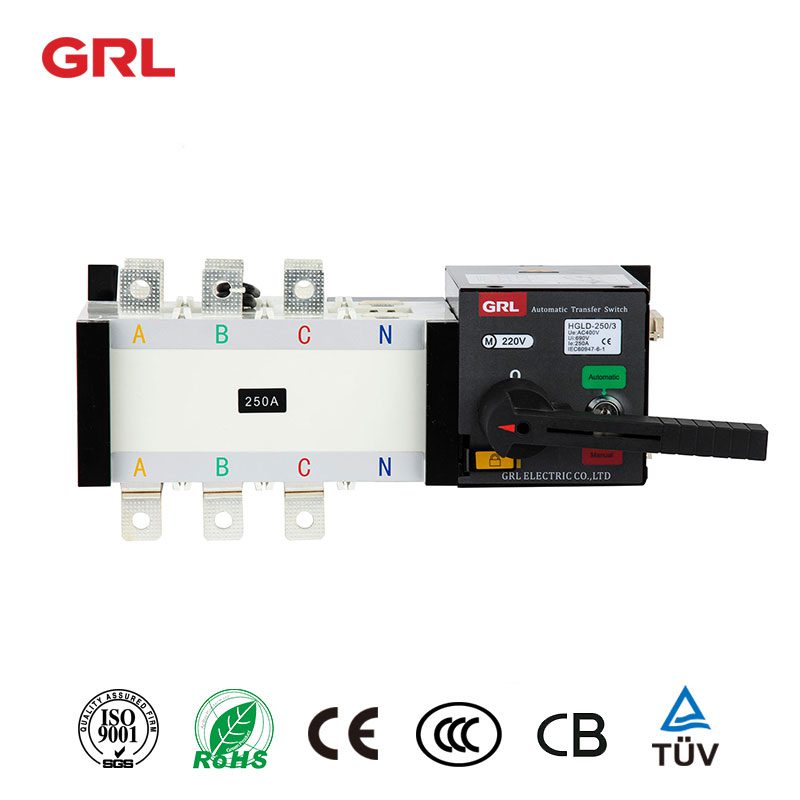
# Automatic Transfer Switch: Ensuring Uninterrupted Power Supply
## What is an Automatic Transfer Switch?
An Automatic Transfer Switch (ATS) is a critical component in backup power systems that automatically transfers electrical load from the primary power source to a secondary (backup) power source when the primary source fails. This seamless transition ensures continuous power supply to essential equipment and systems.
## How Does an Automatic Transfer Switch Work?
The ATS constantly monitors the voltage and frequency of the primary power source. When it detects a power outage or significant voltage fluctuation, it automatically:
1. Disconnects from the primary power source
2. Starts the backup generator (if applicable)
3. Transfers the load to the backup power source
4. Monitors the primary source for restoration
5. Returns the load to the primary source when power is restored
## Types of Automatic Transfer Switches
### 1. Open Transition ATS
Also known as “break-before-make,” this type completely disconnects from the primary source before connecting to the backup source, creating a brief power interruption.
### 2. Closed Transition ATS
This “make-before-break” switch momentarily connects both power sources during transfer, eliminating any power interruption.
Keyword: Transfer Switch
### 3. Delayed Transition ATS
Similar to open transition but includes a programmed delay to allow for motor loads to dissipate residual voltage.
### 4. Soft Loading Transfer Switch
Gradually transfers load between sources, ideal for sensitive equipment.
## Key Features of Modern ATS Systems
– Microprocessor-based controls for precise monitoring
– Built-in test functions for regular maintenance
– Remote monitoring capabilities
– Programmable time delays for proper sequencing
– Alarm contacts for system status notifications
– Load shedding capabilities for prioritized power distribution
## Applications of Automatic Transfer Switches
Automatic Transfer Switches are essential in various settings where power continuity is critical:
– Hospitals and healthcare facilities
– Data centers and telecommunications
– Industrial manufacturing plants
– Commercial buildings
– Emergency services and public safety facilities
– Residential applications with backup generators
## Benefits of Using an ATS
1. **Uninterrupted Power Supply**: Ensures continuous operation of critical systems
2. **Automatic Operation**: Requires no human intervention during power outages
3. **Equipment Protection**: Prevents damage from power fluctuations
4. **Safety**: Properly isolates power sources to prevent backfeeding
5. **Reliability**: Tested and proven technology with high operational reliability
## Selecting the Right Automatic Transfer Switch
When choosing an ATS, consider these factors:
– Electrical load requirements
– Number of poles needed
– Transfer time requirements
– Environmental conditions
– Compliance with local electrical codes
– Future expansion possibilities
## Maintenance Considerations
Regular maintenance is crucial for optimal ATS performance:
– Perform monthly operational tests
– Clean and inspect contacts annually
– Verify proper mechanical operation
– Test control circuits and alarms
– Check for proper voltage sensing
## The Future of Transfer Switch Technology
Advancements in ATS technology include:
– Integration with smart grid systems
– Enhanced communication capabilities for IoT applications
– Improved energy management features
– Smaller, more efficient designs
– Advanced diagnostics and predictive maintenance capabilities
Automatic Transfer Switches play a vital role in modern power distribution systems, providing reliable and automatic power source switching to maintain continuous operation of critical equipment. As power demands grow and systems become more complex, the importance of selecting and maintaining the right ATS for your application cannot be overstated.